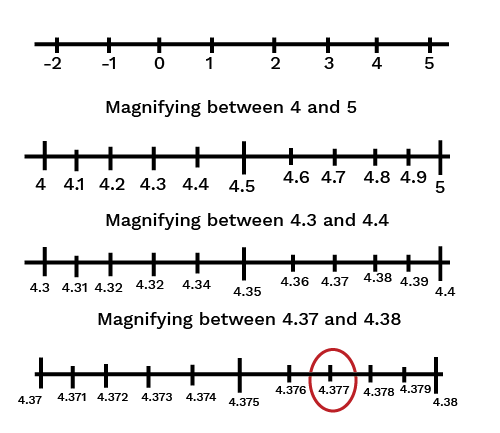Class 9 Maths Chapter 1 Summary Notes PDF Download
Number Systems Class 9 Maths Chapter 1 CBSE Notes - 2025-26
FAQs on Number Systems Class 9 Maths Chapter 1 CBSE Notes - 2025-26
1. What are the most important concepts to revise in Number Systems for Class 9 Maths Chapter 1?
The core concepts to focus on during revision are:
- Types of numbers: Natural, Whole, Integers, Rational, and Irrational numbers, including their definitions and symbols.
- Decimal representation: Terminating and non-terminating decimals, including recurring and non-recurring categories.
- Properties of real numbers: Closure, commutative, and associative properties.
- Euclid’s Division Lemma and the Fundamental Theorem of Arithmetic
2. How should I structure my quick revision for Number Systems before exams?
To revise efficiently, begin with a concept map of all number types and their relationships. Next, summarize key properties, formulas, and theorems. Practice a few representative problems of each concept, especially on decimal expansions and operations with real numbers. End with a recap of important formulas and common application-based questions.
3. What are the key differences between rational and irrational numbers?
Rational numbers can be expressed as p/q, where p and q are integers and q ≠ 0. Their decimal expansions either terminate or repeat. Irrational numbers cannot be so expressed and have decimal expansions that are non-terminating and non-recurring. Examples: Rational – 3/4, -2/5; Irrational – √2, π.
4. How do the properties of real numbers simplify calculations in Class 9 Number Systems?
The closure, commutative, and associative properties enable flexible calculation strategies. For example, using commutative property (a + b = b + a), you can change the order of addition; associativity allows grouped operations. These properties apply to both addition and multiplication of real numbers, making calculations faster and reducing errors in multi-step problems.
5. Why is understanding the decimal expansion of numbers important in Class 9 Maths?
Recognizing if a decimal is terminating, non-terminating recurring, or non-terminating non-recurring helps determine if a number is rational or irrational. This is fundamental for both Class 9 Board exams and higher-level Mathematics, as it connects concepts of fractions, number types, and practical computations.
6. What is the Fundamental Theorem of Arithmetic and how should I remember it for exams?
The Fundamental Theorem of Arithmetic states that every composite number can be expressed uniquely (apart from the order) as a product of prime numbers. For exams, remember this as the ‘unique prime factorization’ property, which is essential for problems involving divisibility, HCF, and LCM.
7. How can a concept map help during last-minute revision of Number Systems Class 9?
A concept map visually links all types of numbers and their properties, enabling a quick summary of definitions, symbols, and relationships. It is a valuable tool to reinforce memory and identify connections across subtopics in Chapter 1, which is highly useful during last-minute review.
8. What misconceptions should I avoid while studying Number Systems for Class 9 revision?
Avoid confusing irrational numbers with non-terminating decimals that repeat (these are still rational). Remember, zero is a whole number and an integer, but not a natural number. Also, the sum or product of two irrational numbers is not always irrational, so check with examples. Clarity on these points prevents common errors in exams.
9. How often should I revisit key formulas and properties during my Class 9 Number Systems revision?
It is recommended to review key formulas and properties regularly, especially before tests and exams. Frequent short reviews help reinforce memory and identify weak areas needing extra practice.
10. What are some effective tips for rapid revision of Class 9 Maths Chapter 1?
Summarize each subtopic in your own words, focus on example problems, create flashcards for formulas, and attempt a few challenging problems from previous years or sample papers. Prioritize understanding concept flows instead of rote memorization for more efficient and confident recall in the exam.




















 Watch Video
Watch Video

















